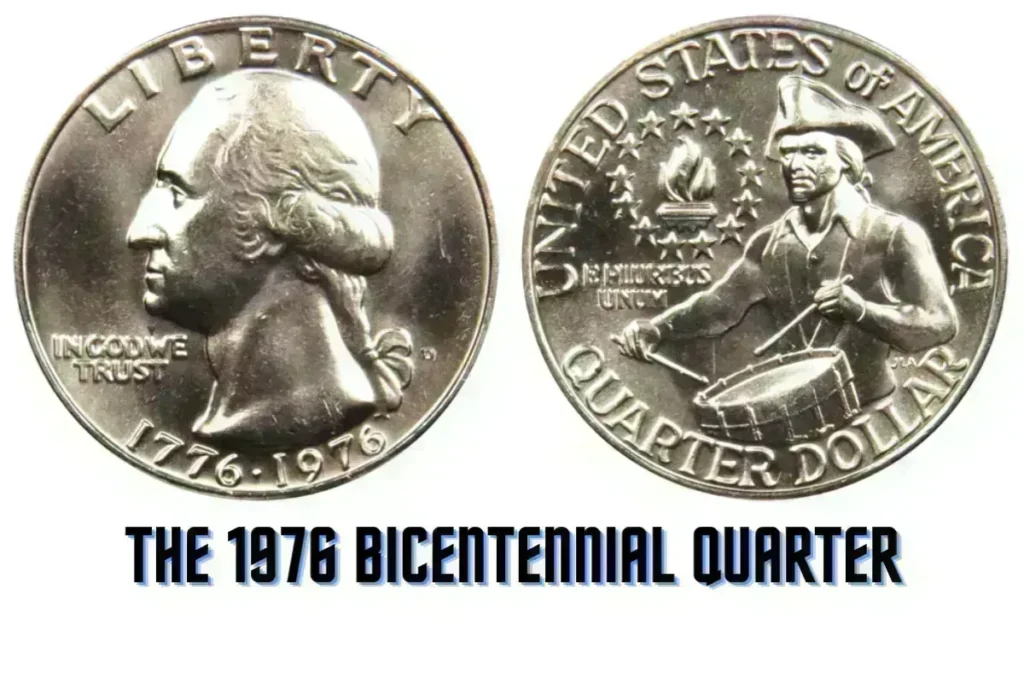In the world of coin collecting, some coins are incredibly valuable due to their rarity, historical importance, or unique characteristics.
One such coin is a rare United States quarter dollar that recently sold for over $19,000. This article explores what makes this coin so special and why it commands such a high price.
The Bicentennial Quarter Dollar: An Overview

The quarter dollar in question is a bicentennial edition minted in 1976. This special edition was created to celebrate the 200th anniversary of the Declaration of Independence.
There are two versions of this coin: a standard copper-nickel version and a more valuable 40% silver-clad version. The silver version is much rarer, making it more valuable to collectors.
Key Features of the 1976 Bicentennial Quarter
- Year of Minting: 1976
- Composition: 40% silver-clad alloy
- Design: Dual date (1776-1976) with a unique reverse pattern
- Mint Marks: Philadelphia (no mint mark), Denver (D), San Francisco (S)
- Estimated Value: Up to $19,000 (depending on condition and rarity)
Why Is This Quarter Worth $19,000?

Several factors contribute to the high value of this quarter:
- Silver Content: Unlike the common copper-nickel quarters, this coin is made of a 40% silver-clad alloy, making it much rarer.
- Condition: Coins in mint or near-mint condition are highly desirable. Collectors are willing to pay a premium for coins that have been well-preserved.
- Rarity: The combination of limited production, silver content, and the special bicentennial design makes this quarter highly sought after.
- Historical Significance: Commemorative coins celebrating important historical events, like the bicentennial of the Declaration of Independence, often hold extra value due to their cultural and historical importance.
Auction and Sale Details
One of these rare quarters was sold at auction for over $19,000. This sale demonstrates the coin’s value in the collectors’ market.
As the 250th anniversary of the Declaration of Independence approaches, similar coins are expected to fetch high prices.
How to Determine the Value of Your Bicentennial Quarter
If you have a 1976 bicentennial quarter and want to know its value, follow these steps:
- Check the Composition: Determine if your coin is made of the 40% silver-clad alloy. This can be done by checking its weight, sound, and sometimes through visual inspection.
- Assess the Condition: The condition of the coin significantly affects its value. Coins with minimal wear and no visible damage are more valuable.
- Get It Graded: Professional grading services, such as the Professional Coin Grading Service (PCGS), can provide an official grade, helping you determine the coin’s market value.
- Research Recent Sales: Look at recent auctions or sales of similar coins to gauge the current market value.
The 1976 Bicentennial Quarter Dollar is a prized item in the world of coin collecting due to its silver content, historical significance, and rarity.
Understanding these factors can help collectors appreciate its value and make informed decisions about their own collections.
1. What makes the 1976 Bicentennial Quarter Dollar valuable?
The 1976 Bicentennial Quarter Dollar is valuable due to its 40% silver-clad alloy composition, rarity, and historical significance. Coins in excellent condition are particularly sought after by collectors.
2. How can I tell if my 1976 quarter is the silver-clad version?
To determine if your 1976 quarter is silver-clad, check its weight and sound. Silver coins have a different weight and produce a distinct sound when dropped compared to copper-nickel coins. You can also inspect the coin for mint marks or use a silver testing solution.
3. How do I know the condition of my Bicentennial Quarter Dollar?
The condition of a coin is assessed based on its wear and visible damage. Coins in mint or near-mint condition are more valuable. Professional grading services, like PCGS, can provide an official grade for your coin.
4. Why do Bicentennial Quarter Dollars have different mint marks?
The mint marks (Philadelphia, Denver, and San Francisco) indicate where the coin was minted. Philadelphia quarters have no mint mark, Denver quarters have a “D,” and San Francisco quarters have an “S.” These marks can affect the coin’s rarity and value.
5. How can I find out the current market value of my 1976 quarter?
To find out your coin’s market value, check recent auction results or sales of similar coins. You can also consult with a professional coin appraiser or use online resources dedicated to coin values.









